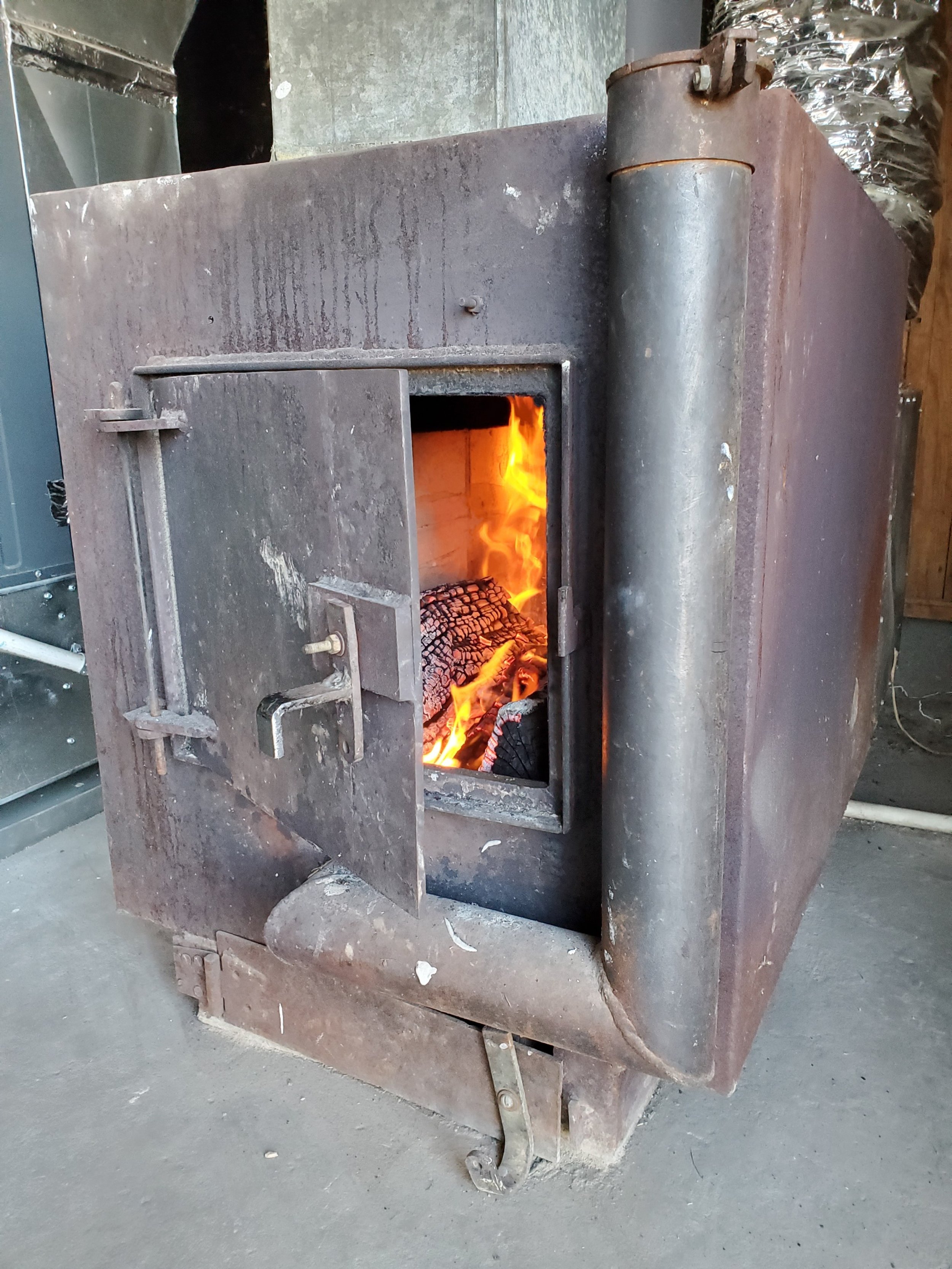Grandpa's Stove
/I’ve mentioned here before how I like a cozy warm fire when the temperatures start dipping low. Well they have certainly taken a plunge this week! While being able to see a flame seems to mentally warm me, even a wood fire in an enclosed stove is welcome. I want to tell you about my stove.
An article about a stove may seem extremely boring, so please bear with me. This stove is a little special to me, you see, my grandfather built it.
Grandpa Berris Stepp wore a myriad of hats in his life. Like most mountain men, he did whatever came to his hand in order to keep food on the table and a roof over his family’s head. He farmed, of course. I think that was always his passion. He mined for coal from Tennessee to Virginia to Pennsylvannia. And then he learned a trade – welding.
As I understand the story, he and his brother, Leelon, had moved to Virginia to mine coal. Grandpa told me about the tiny shafts they had to work in – he said he had to lie on his back to drink water. It must have been a particularly hard day when Leelon sat down beside him and said, “We’re gonna’ starve to death if we don’t we get out of here.” That’s all Grandpa needed and they were on their way home to the mountain. Leelon knew that Tennessee Polytechnic Institute (later known as Tennessee Technological University) was training technical skills and these two young men enrolled there. Grandpa would learn welding and his brother studied machining. When their courses were finished, they were prepared for more than chipping coal out of the mountain side – although Grandpa would return to the mines when needed.
Grandpa used his welding skills at Oak Ridge during World War II, then another 20 years at Martin Marietta. He also welded for farmers all over the community, repairing machinery and fabricating solutions to everyday problems. That’s how he came to build my stove.
Daddy envisioned a cleaner and more efficient means of heating our home by placing the wood and the stove out in the garage. Using forced air, heat would be pushed throughout the house – this sounds so common-place to us today as we are accustomed to central heat and air. But in 1977, there weren’t very many systems like that on this mountain. Certainly, one could have been purchased but that was scarcely an option. So they got some good steel and Grandpa worked out a design.
Now, I’ve inherited this little stove and Grandpa’s design and handiwork are still working wonderfully. I wish he could see that a whole other generation of his family is enjoying it.
At some point, Mama and Daddy got ahead enough that they thought they should have a factory-built furnace and they replaced Grandpa’s homemade stove with an Ashley Furnace. We nearly froze that winter. I can’t explain to you the technicalities, but after several trips from Ashley factory representatives and their engineers, the factory-built model could not be made to heat our home. That spring Grandpa’s little stove was re-installed and hasn’t been displaced again.
I’m going to shamelessly admit that I share this story in part to brag on my grandpa. But I also offer it as testimony of the skill, determination and ingenuity of our mountain people.















